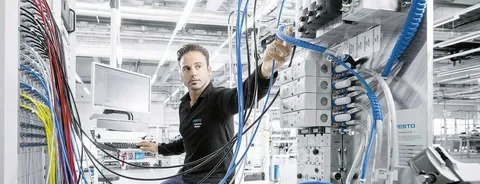Kitchen suppliers are a great resource for commercial kitchens, especially when it comes to equipment.…
Powering Productivity: The Role of Electrical Automation in Industrial Processes
In today’s fast-paced industrial landscape, maximizing productivity and efficiency is crucial for businesses to stay competitive. One of the key drivers behind this optimization is Electrical Automation. From assembly lines to manufacturing plants, electrical automation plays a pivotal role in streamlining processes, enhancing productivity, and achieving consistent results.
In this blog post, we will explore the significant role that electrical automation plays in industrial processes and how it empowers businesses to reach new levels of success.
Understanding Electrical Automation
Electrical automation refers to the use of technology, specifically electrical systems and control devices, to automate and regulate various industrial processes. It involves the integration of sensors, actuators, programmable logic controllers (PLCs), and other intelligent devices to monitor, control, and optimize the performance of machinery and equipment. By replacing or augmenting manual tasks with automated systems, businesses can achieve higher precision, faster production cycles, and improved overall productivity.
Enhancing Efficiency and Speed
One of the primary advantages of electrical automation is its ability to enhance efficiency and speed in industrial processes. Automation eliminates human errors, reduces repetitive tasks, and ensures consistent performance. By automating tasks such as material handling, assembly, and quality control, businesses can achieve higher production rates, minimize downtime, and deliver products to the market more quickly. This increased efficiency allows companies to meet customer demands, reduce lead times, and gain a competitive edge.
Improved Accuracy and Quality Control
Maintaining high levels of accuracy and quality is essential in industrial processes. Electrical automation excels in this aspect by providing precise control over operations. With automated systems, businesses can achieve tight tolerances, accurate measurements, and precise positioning. Sensors and feedback mechanisms enable real-time monitoring and adjustments, ensuring that products meet stringent quality standards. The result is improved product quality, reduced waste, and enhanced customer satisfaction.

Safety and Risk Mitigation
Industrial environments can be hazardous, with potential risks to workers and equipment. Electrical automation plays a crucial role in ensuring workplace safety and risk mitigation. By automating certain tasks, businesses can minimize the need for human intervention in dangerous or repetitive operations. Safety features such as emergency stops, interlocks, and safety sensors provide added protection to prevent accidents and injuries. Electrical automation creates a safer work environment and promotes the well-being of employees.
Scalability and Adaptability
Another significant advantage of electrical automation is its scalability and adaptability. Businesses can start with automating specific processes and gradually expand automation efforts as needed. Automation systems can be easily integrated into existing infrastructure, allowing for a smooth transition and minimal disruption. Additionally, automation enables flexibility to adapt to changing production requirements, whether scaling up production volumes or introducing new product lines. This scalability and adaptability empower businesses to stay agile in dynamic market conditions.
Data Acquisition and Analysis
Electrical automation generates vast amounts of data, providing valuable insights into industrial processes. Through data acquisition and analysis, businesses can better understand product performance, identify bottlenecks, and make informed decisions to optimize operations. Key performance indicators (KPIs) and real-time analytics enable proactive monitoring and predictive maintenance, preventing costly breakdowns and maximizing uptime. Data-driven decision-making becomes a strategic advantage, leading to continuous improvement and increased productivity.
Conclusion
As technology advances, electrical automation’s role in industrial processes will become even more critical. Businesses that embrace and harness the power of electrical automation are better positioned to thrive in a highly competitive landscape. By investing in automation solutions, companies can power productivity, improve efficiency, ensure quality, enhance safety, and drive innovation.












